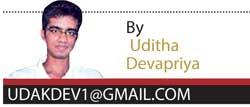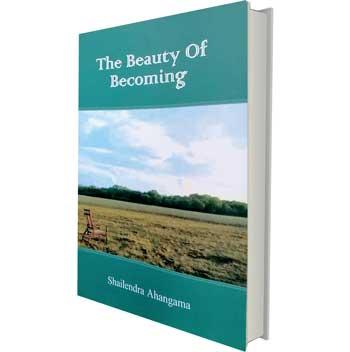Reply To:
Name - Reply Comment
Last Updated : 2024-04-20 18:34:00
 The young writer in English in Sri Lanka is severely handicapped by a lack of range and of experience. Then again, this criticism can be made of writers in English in general, regardless of age: when was the last time I came across the playful rhythms and deliberately punctured syntax which I did with Vihanga Perera, Malinda Seneviratne, Lakkdas Wickramasinghe? These were, and are, not men conscious of their craft: what distinguishes them from the rest was, and is, their spontaneous responses to life. Critics would call this “polyphonic”, its key distinguishing marks being an austere simplicity of style which conceals, instead of revealing, a wide range of experiences and themes. In the end what emerges is not, strictly speaking, the poet’s voice, but rather a multiplicity of voices “counterpointed against one another.” It’s the yardstick which separates the great from the mediocre, the passable, and the good.
The young writer in English in Sri Lanka is severely handicapped by a lack of range and of experience. Then again, this criticism can be made of writers in English in general, regardless of age: when was the last time I came across the playful rhythms and deliberately punctured syntax which I did with Vihanga Perera, Malinda Seneviratne, Lakkdas Wickramasinghe? These were, and are, not men conscious of their craft: what distinguishes them from the rest was, and is, their spontaneous responses to life. Critics would call this “polyphonic”, its key distinguishing marks being an austere simplicity of style which conceals, instead of revealing, a wide range of experiences and themes. In the end what emerges is not, strictly speaking, the poet’s voice, but rather a multiplicity of voices “counterpointed against one another.” It’s the yardstick which separates the great from the mediocre, the passable, and the good.
 I am not claiming that The Beauty of Becoming, written by 15-year-old Shailendra Ahangama with a kind of alacrity which, at one level, seems to me almost too disarming for someone his age, has met that yardstick. In any case 63 poems, of which 23 are very short and slick, would hardly invite comparisons with those names I’ve mentioned, or their lesser contemporaries. And yet it’s more than just a good collection, and certainly more than just the typical boy’s or girl’s anthologies one tends to peruse so frequently nowadays. It does not meet the criteria we were asked to think of when attempting poetry: “verbal density, rich metaphorical life, keen sensuous intensity, the muscular rigour of the rhythms of speech.” In other words, the kind of poetry that easily lends itself to analysis. Shailendra’s work, by contrast, reduces experience to its barest essentials, and hardly seems to be preoccupied with critical postures.
I am not claiming that The Beauty of Becoming, written by 15-year-old Shailendra Ahangama with a kind of alacrity which, at one level, seems to me almost too disarming for someone his age, has met that yardstick. In any case 63 poems, of which 23 are very short and slick, would hardly invite comparisons with those names I’ve mentioned, or their lesser contemporaries. And yet it’s more than just a good collection, and certainly more than just the typical boy’s or girl’s anthologies one tends to peruse so frequently nowadays. It does not meet the criteria we were asked to think of when attempting poetry: “verbal density, rich metaphorical life, keen sensuous intensity, the muscular rigour of the rhythms of speech.” In other words, the kind of poetry that easily lends itself to analysis. Shailendra’s work, by contrast, reduces experience to its barest essentials, and hardly seems to be preoccupied with critical postures.
I’ve implied earlier that Shailendra’s style seems to me the opposite of poetry that’s crafted to be conscious of its own power and inspiration, yet I feel that’s an unfair assessment if all one is looking for in poetry in whether it’s carefully worded or spontaneously inspired. Take this link from “Easter Sunday”, one of the more didactic poems in his collection.
On Easter Sunday
When Christ had risen
All hope and generosity was
Captive in hatred’s prison
“Captive in hatred’s prison” – the effect of the phrase is to me almost Tennysonian: it’s rich in metaphorical power and conjures up a vivid, if not painful, memory of Easter 2019. But that’s just one mode of writing. Consider this line, from “School Shooting.”
The spirit of youth,
Is a passionate one,
But it paints angst,
With its brush, the gun.
The simplicity is, if not disarming, then certainly on the level of a haiku piece: “paints angst” and “its brush, the gun” – what better metaphors to contrast with the sensuousness and ornate richness of “captive in hatred’s prison”? This is the young poet at his best: where he discards long, drawn out, diffuses repetitiveness in favour of the quiet, the sober, and the austere. Since I am no qualified critic, I refuse to go beyond this assessment, except to say that I do not wish to make a clear-cut distinction between these two modes or voices. In other words, and to put it simply, Shailendra’s longer poems aren’t necessarily inferior to his shorter poems, the latter of which can deteriorate to or border on academicism and incoherence at times:
Obstinacy is a tool,
Not an attitude.
That’s from “The Tortoise Speaks”, but try as I might and for the life of me I can’t figure out the connection: very different from when the title and the verses come together beautifully in ways that let our imagination run riot, as with “At Best when Oppressed.”
The vinyl record,
Is certainly an odd thing,
When the needle injures it,
To scream, it will sing.
Superficially, it’s about the record, but at a deeper level the poet is describing the nature of oppression and our specific responses to it. At least that’s my way of looking at it.
To divorce form from content in a review is as bad as to confuse or conflate the two. What is written about is as important, in that sense, as how it’s written. Jumping from ghost stories to San Francisco, from the Buddha’s Abinishkramanaya to Easter 2019, Shailendra experiments in verse with a multitude of themes and subjects. His fascination with some of these themes reflect his age at times; at others, it does not. I will not make a clear-cut distinction between the one and the other, since the quality of the poetry varies considerably whether he’s writing on a subject someone his age would be familiar with or on a subject he normally would not. I will say this, though: even in an ambitious undertaking like “Abinishkramanaya”, Shailendra gives into descriptions and metaphors which don’t conform to the typical pattern.
What a paternal sacrifice,
A shocking felony.
One would hardly think of associating Siddhartha Gautama with a paternal figure shirking his responsibilities, and yet that’s what Shailendra conjures up, and it’s refreshing (though clerics and clergymen would beg to differ). By equating sacrifice with felony, he brings up or tries to bring up the dualism of what Siddhartha is about to do: he leaves domesticity for the sake of the greater good, but does so while abandoning the “holiness of parenthood.” It’s probably one of his best poems, and it’s also one of his longest, which should remind one that austerity of style doesn’t necessarily always make out for great poetry. Regardless of how one views his interpretation of the Buddha, moreover, there’s no denying it’s an interpretation we’ve not come across before; the effect is so intriguing as to lead us to expect a pulsating conclusion, which is exactly what he denies us in the last few lines:
The journey was long,
Yet it awaited,
And further and further,
Onward he rode.
“Onward he rode” – the quaint, poignant inevitability of pursuing the greater good surpassing all worldly and paternal obligations. To read lines like this is to realise that here is a poet who reads as prodigiously as he writes. I say that not because I know Shailendra, but because it’s evident even with a cursory, superficial glance through his collection. From that we can try to understand the meaning of his title, which he tries to interpret at the end. The contrasts of flux and immobility, colour and dullness, diffuseness and sparseness: these he tries to balance in his poems, and while he doesn’t always succeed, where he succeeds he does so admirably as to compel our attention, and then our praise. If it’s hard to deny the latter to the book and the author, it’s because this is an undertaking that must have taken months of preparation and pruning: I’ve been told that the 63 poems are but a mere fraction of what he put into the first draft. It is what a labour of love should be.
What can explain a book like this? I’m tempted to believe it’s the family and the school, and although I may be right, I feel at the same time that they may not be everything. On the other hand there’s no denying these two influences on him: Shailendra himself makes it clear in his preface. A 15-year-old writing poetry is, of course, nothing to be alarmed or joyous about; 15-year-olds do it all the time when they’re free, even if much of what gets written in painful doggerel. But this 15-year-old from S. Thomas’, who has come up with verses and lines most of his peers will not be able to equal, at least not for quite some time, is different. Doggerel is the last word I’d use on what he’s published. Which is why it’s a pity the book isn’t available publicly. It should be. In a country where English writing is either pretentious or predictable, Shailendra Ahangama springs quite a number of surprises on us.

Add comment
Comments will be edited (grammar, spelling and slang) and authorized at the discretion of Daily Mirror online. The website also has the right not to publish selected comments.
Reply To:
Name - Reply Comment
On March 26, a couple arriving from Thailand was arrested with 88 live animal
According to villagers from Naula-Moragolla out of 105 families 80 can afford
Is the situation in Sri Lanka so grim that locals harbour hope that they coul
A recent post on social media revealed that three purple-faced langurs near t